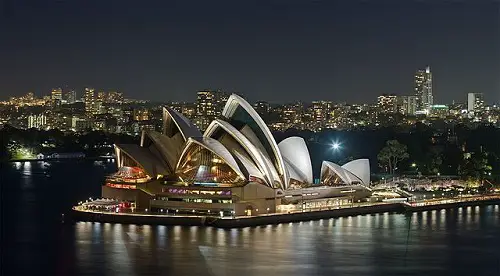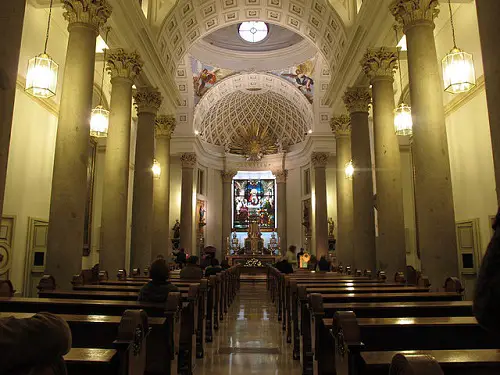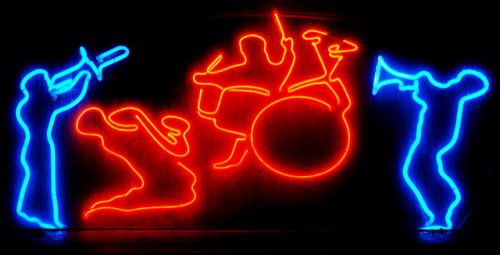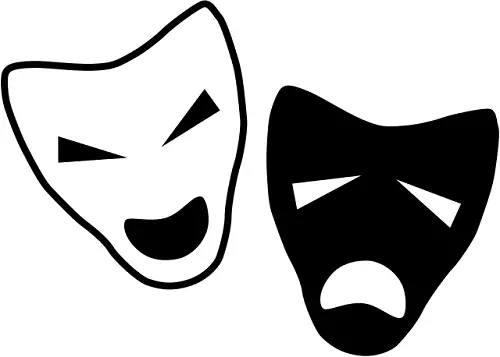
The difference between opera and oratorio is that opera is a stage production with costumes and spectacular effects and oratorio is a work for instruments and voices without costumes and acting, to be performed in a religious setting. Opera and oratorio are forms of music based on the traditions of western music.
The origins of opera and oratorio
- In Rome, circa 1560, a group of laymen led by St Filippo Neri, met in the oratory or prayer hall of the church, where sermons, prayers and devotional services took place. This was the beginning of oratorio, derived from the word oratory. Opera began in Florence, Italy, circa 1600, by a group known as the Camerata.
- At that stage, opera was written for the court and ceremonial occasions, whereas oratorio was written mainly for the church.
- The subject matter of opera is based on Greek or Roman mythology and history, whilst biblical stories and scripture form the basis of oratorio.
- 1637, saw the first public opera house open. The opera in Venice, became a tourist attraction with its spectacular stage effects. By 1640, the Jesuits, a religious order, supported oratorio in an attempt to counteract the popularity of opera.
Performance
- Opera is drama sung with orchestral accompaniment provided by the orchestra in the orchestra pit below the stage. It is typical of musical theatre and combines music, scenery, lighting, drama, acting and costumes to create an exciting, visual and emotional experience for the audience. In the baroque era, oratorio stood together with opera, as a major development in vocal music. It was used for religious services but nowadays it is performed in concert halls or churches, without all the elements of theatre. Oratorio does not use scenery, costumes and spectacular effects and is therefore a different experience for the listener, allowing the imagination to come to play.
- Performers in an opera, not only have to be skilled in singing but in acting as well. There are many varied characters in an opera. In order for the soloists to portray these characters, they need acting skill. Unlike ordinary drama, singing is the vehicle through which the characters and the plot are revealed, thus enhancing the emotional impact of the words and the story. Although it is also set to a narrative text, oratorio differs from opera in that it requires no acting, scenery or costumes. The dramatic effect is enhanced by the way the instruments and music is used.
The form of opera and oratorio
Overture
- Operas begin with an overture or a prelude played by the orchestra. The music used is usually based on material that comes later in the opera. The Oratorio does not always have an overture and may start with a chorus instead.
Libretto or text
- In opera the libretto, is written by the librettist or dramatist. The composer and librettist collaborate in order to accommodate each other’s needs and tell dramatic stories about love and murder. Opera is secular and not connected to the church. In oratorio, the text is usually taken from the Bible or Scripture. Both opera and oratorio tell a story but the main difference is the audience. Opera was performed in the court for the aristocracy while oratorio reached out to the people and is written in Latin or the vernacular, the language of the people. The first operas are written in Italian.
Type of opera
- Opera is either, serious, comic or a combination of both. Some have spoken dialogue but is generally sung throughout. Oratorio is a large-scale religious work, containing soloists, chorus and smaller groups of instrumentalists known as ensembles. The later works have a narrator, called a testo, introduced to explain the drama. His vocal part is often written in recitative style. Opera was prohibited during Lent, so oratorios were performed as an alternative.
The Voice
- In opera, the voices are more finely defined into: coloratura soprano, lyric soprano, dramatic soprano, lyric tenor, dramatic tenor, basso buffo also known as basso profundo. The Castrati, (male singers who were castrated before the age of puberty) were the highest paid virtuoso singers of the time. They had powerful lungs and the voice range of a woman and became a popular attraction for the opera. The main soloists are supported by secondary soloists, a chorus and dancers. The virtuoso singing style in oratorio was not as clearly defined as that in opera.
The Prompter
- The prompter gives cues to the performers and is situated centre stage near the footlights on the operatic stage whereas there is no prompter in the performance of an oratorio.

Aria
- The Aria is a complete piece sung by the soloist. This is one of the highlights of the opera and is written for solo voice and orchestra. The aria of the late baroque is in ABA form called a da capo aria, because the A section is repeated after the B section. The da capo,is marked by melodic embellishments and ornaments for the virtuoso singer. It often uses melismatic writing, where there are many notes to one syllable. The continuity of the drama comes to a halt, when the soloist sings with vocal virtuosity and is applauded by the audience. The aria in oratorio is also a solo song describing a mood or emotion but is not acted out by the soloist as in opera. To describe a sad emotion, the music will most likely be written in a minor key.
Recitative
- The purpose of the recitative is to get the narrative across with the least amount of music. It is used for monologues and dialogues, which often describe the action and precedes the aria. It is a free style of music that uses the rhythms and inflections of the spoken word against a simple chordal accompaniment. There are often many words on a single note. In opera, the orchestra sometimes accompanies the recitative for more dramatic effect but in oratorio it is just accompanied by the basso continuo.
The chorus
- In opera, the role of the chorus is to create atmosphere and comment on the action, taking place. The chorus in oratorio becomes the centre of the dramatic action. This is one of the main differences between opera and oratorio.
Dance
- In opera dance is often incidental. It does not occur in oratorio.
Chorale
- This is a four -part hymn tune written for the chorus (Soprano, Alto, Tenor and Bass) in an oratorio. It is accompanied by the orchestra, that doubles up on the voice parts. This is a typical hymn that could be sung by the congregation. It does not occur in opera.
The Orchestra
- In opera, the role of the orchestra is to accompany and support the dramatic action and the singers on the stage. It is of a similar size to the normal symphony orchestra, but with a reduced string section. The reason why the orchestra is in the pit, is so that it does not interfere with the production on stage. It is also able to enhance the mood and atmosphere of the drama. In the performance of oratorio, the orchestra is at the same level as the singers.
| Opera | Oratorio |
| Began in Florence Italy 1600 by Camerata | Began in Rome circa 1560 with St Filippo Neri. |
| Libretto written by a librettist in collaboration with the composer drawing inspiration from Greek or Roman mythology and history. | Text taken from the Bible and scripture. |
| Performed on stage with costumes, lighting and special stage effects. | Performed in prayer halls or in the church. |
| Clearly defined virtuoso singers including Castrati | Not as clearly defined virtuoso singers. |
| Performers had to be skilled actors and singers. | Singers were not required to act. |
| Overture by orchestra played material that is to come in the opera. | Some have overtures but others have instrumental interludes or a chorus. |
| Chorus enhances the mood and dramatic action. | Chorus is the centre of the work. |
| Written for the aristocracy in Italian. | Written primarily for the people in Latin or the vernacular. |
| Opera either serious or comic. | Oratorio religious. |
| More defined voice ranges. | Basic voice ranges. |
| Prompter at foot of stage. | No prompter. |
| Aria acted out by virtuoso singer. | Not acted out by singer. |
| Recitative sometimes accompanied by orchestra for more dramatic effect. | Recitative accompanied by basso continuo. |
| Dance forms part of the production. | No dance. |
| No chorale | The Chorale, (hymn) can be sung by congregation. |
| Orchestra situated in the pit below the stage. | Orchestra integrated on stage. |
Author: de
Facebook Comments












Leave a Reply